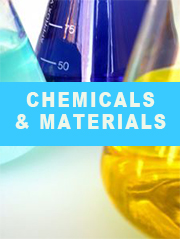Report overview
Tungsten carbide is a made up of chemically bonded tungsten and carbide. Its superior hardness enables it to replace steel and other metal alloys in a variety of applications. Colloquially, tungsten carbide is often simply called carbide. In its most basic form, it is a fine gray powder, but it can be pressed and formed into shapes for use in industrial machinery, tools, abrasives, as well as jewelry. Tungsten carbide is approximately four times stiffer than steel, with a Young's modulus of approximately 550 GPa, and is much denser than steel or titanium. It is comparable with corundum (a-Al2O3) in hardness and can only be polished and finished with diamond wheels and compounds.
This report aims to provide a comprehensive presentation of the global market for Tungsten Carbide Powder (WC), with both quantitative and qualitative analysis, to help readers develop business/growth strategies, assess the market competitive situation, analyze their position in the current marketplace, and make informed business decisions regarding Tungsten Carbide Powder (WC). This report contains market size and forecasts of Tungsten Carbide Powder (WC) in global, including the following market information:
Global Tungsten Carbide Powder (WC) Market Revenue, 2018-2023, 2024-2029, ($ millions)
Global Tungsten Carbide Powder (WC) Market Sales, 2018-2023, 2024-2029, (MT)
Global top five Tungsten Carbide Powder (WC) companies in 2022 (%)
The global Tungsten Carbide Powder (WC) market was valued at US$ 1898.4 million in 2022 and is projected to reach US$ 2406.4 million by 2029, at a CAGR of 3.4% during the forecast period. The influence of COVID-19 and the Russia-Ukraine War were considered while estimating market sizes.
Global Tungsten Carbide Powder (WC) key players include Sandvik, Xiamen Tungsten, China Minmetals Corporation, Element Six, Jiangxi Yaosheng, etc. Global top five manufacturers hold a share about 55%. Asia-Pacific is the largest market, with a share about 50%, followed by Europe and North America, total have a share about 35 percent. In terms of product, Grain Sizes 1-10 ?m is the largest segment, with a share about 45%. And in terms of application, the largest application is Machine Tools & Components, followed by Cutting Tools, Dies & Punches, etc.
We surveyed the Tungsten Carbide Powder (WC) manufacturers, suppliers, distributors and industry experts on this industry, involving the sales, revenue, demand, price change, product type, recent development and plan, industry trends, drivers, challenges, obstacles, and potential risks.
Total Market by Segment:
Global Tungsten Carbide Powder (WC) Market, by Type, 2018-2023, 2024-2029 ($ Millions) & (MT)
Global Tungsten Carbide Powder (WC) Market Segment Percentages, by Type, 2022 (%)
Grain Sizes Below 1 ?m
Grain Sizes 1-10 ?m
Grain Sizes Above 10 ?m
Global Tungsten Carbide Powder (WC) Market, by Application, 2018-2023, 2024-2029 ($ Millions) & (MT)
Global Tungsten Carbide Powder (WC) Market Segment Percentages, by Application, 2022 (%)
Machine Tools & Components
Cutting Tools
Dies & Punches
Others (Abrasive Products, etc.)
Global Tungsten Carbide Powder (WC) Market, By Region and Country, 2018-2023, 2024-2029 ($ Millions) & (MT)
Global Tungsten Carbide Powder (WC) Market Segment Percentages, By Region and Country, 2022 (%)
North America
US
Canada
Mexico
Europe
Germany
France
U.K.
Italy
Russia
Nordic Countries
Benelux
Rest of Europe
Asia
China
Japan
South Korea
Southeast Asia
India
Rest of Asia
South America
Brazil
Argentina
Rest of South America
Middle East & Africa
Turkey
Israel
Saudi Arabia
UAE
Rest of Middle East & Africa
Competitor Analysis
The report also provides analysis of leading market participants including:
Key companies Tungsten Carbide Powder (WC) revenues in global market, 2018-2023 (Estimated), ($ millions)
Key companies Tungsten Carbide Powder (WC) revenues share in global market, 2022 (%)
Key companies Tungsten Carbide Powder (WC) sales in global market, 2018-2023 (Estimated), (MT)
Key companies Tungsten Carbide Powder (WC) sales share in global market, 2022 (%)
Further, the report presents profiles of competitors in the market, key players include:
Sandvik
Xiamen Tungsten
China Minmetals
Element Six
Jiangxi Yaosheng
GuangDong XiangLu Tungsten
Chongyi Zhangyyuan Tungsten
Plansee (GTP)
JXTC
Japan New Metals
AST
Kohsei
ALMT
Kennametal
H.C.Starck
TaeguTec
Wolfram JSC
Buffalo Tungsten
ERAMET
Lineage Alloys
Outline of Major Chapters:
Chapter 1: Introduces the definition of Tungsten Carbide Powder (WC), market overview.
Chapter 2: Global Tungsten Carbide Powder (WC) market size in revenue and volume.
Chapter 3: Detailed analysis of Tungsten Carbide Powder (WC) manufacturers competitive landscape, price, sales and revenue market share, latest development plan, merger, and acquisition information, etc.
Chapter 4: Provides the analysis of various market segments by type, covering the market size and development potential of each market segment, to help readers find the blue ocean market in different market segments.
Chapter 5: Provides the analysis of various market segments by application, covering the market size and development potential of each market segment, to help readers find the blue ocean market in different downstream markets.
Chapter 6: Sales of Tungsten Carbide Powder (WC) in regional level and country level. It provides a quantitative analysis of the market size and development potential of each region and its main countries and introduces the market development, future development prospects, market space of each country in the world.
Chapter 7: Provides profiles of key players, introducing the basic situation of the main companies in the market in detail, including product sales, revenue, price, gross margin, product introduction, recent development, etc.
Chapter 8: Global Tungsten Carbide Powder (WC) capacity by region & country.
Chapter 9: Introduces the market dynamics, latest developments of the market, the driving factors and restrictive factors of the market, the challenges and risks faced by manufacturers in the industry, and the analysis of relevant policies in the industry.
Chapter 10: Analysis of industrial chain, including the upstream and downstream of the industry.
Chapter 11: The main points and conclusions of the report.
